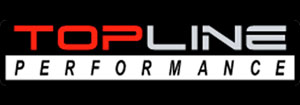– we look for the patterns that describe how design systems and processes work and we turn them into machine-readable logics and rules.
significantly more adaptive, there is a lesson in here somewhere..Professor John Dyson spent more than 25 years at GlaxoSmithKline, eventually ending his career as VP, Head of Capital Strategy and Design, where he focussed on developing a long-term strategic approach to asset management..

While there, he engaged Bryden Wood and together they developed the Front End Factory, a collaborative endeavour to explore how to turn purpose and strategy into the right projects – which paved the way for Design to Value.He is committed to the betterment of lives through individual and collective endeavours.. As well as his business and pharmaceutical experience, Dyson is Professor of Human Enterprise at the University of Birmingham, focussing on project management, business strategy and collaboration.. Additionally, he is a qualified counsellor with a private practice and looks to bring the understanding of human behaviour into business and projects.. To learn more about our Design to Value philosophy, read Design to Value: The architecture of holistic design and creative technology by Professor John Dyson, Mark Bryden, Jaimie Johnston MBE and Martin Wood.Available to purchase at.Martin and Adrian examine the societal and economic complexities involved, advocating for clear policy frameworks and collaborative efforts to stimulate investment and accelerate progress in these hard-to-reach areas, which are vital for the UK's net zero ambitions.. Click the 'play button' above to watch the episode, or read our 5 Key Takeaways from this episode below.... 1.

Focus on hard to abate Sectors is Critical:.While significant progress has been made in general decarbonisation, achieving net zero hinges on addressing the most hard to abate sectors like iron, steel, cement, chemicals, and heavy transport (e.g., aviation), where electrification is not a straightforward solution.. 2.

Beyond Electrification:.
Diverse Technological Pathways Required: Decarbonising these sectors demands a range of innovative technologies beyond simple electrification, such as sustainable aviation fuels (SAF) for aviation or carbon capture solutions for cement production, often requiring significant energy inputs.. 3.The process will be both highly efficient and cost-effective, overcoming existing viability barriers and creating a realistic path to sustainable, reliable energy for areas of the world still reliant on coal-fired power.. Terra Praxis: new nuclear is key to helping achieve net zero.
Kirsty Gogan and Eric Ingersoll co-founded non-profit Terra Praxis to facilitate the design and execution of complex, high leverage strategies aimed at inspiring, and mobilising leaders across multiple sectors.Their goal is to initiate sustained action on the environmental crisis and transform our prospects for avoiding catastrophic climate impacts.
Gogan says that although we’re starting to see a shift in thinking, the general perception of nuclear power remains a bit outdated, especially when we start to look at new nuclear, advanced heat technologies.She points out that, in actuality, nuclear has consistently been identified as necessary in our climate mitigation roadmaps, by everyone from the Intergovernmental Panel on Climate Change, to the International Energy Agency and the European Commission.. A leading environmentalist, Gogan says that she too started out as anti-nuclear, but her perception of nuclear technology changed after reading Professor David MacKay’s book, Sustainable Energy Without the Hot Air.
